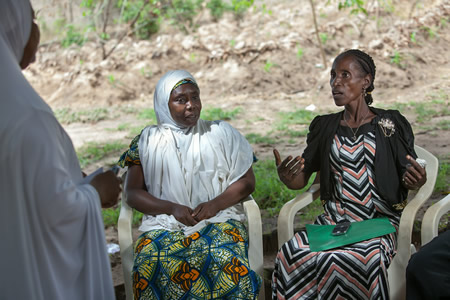ABC pour les managers qui dirigent: E est pour Envision

Everything in the world has started with a thought. The thought, if and when attractive enough, becomes a vision. The vision, when compelling enough, leads to action to materialize the vision in the world. Envisioning together allows people to discover that they want the same or a similar thing and move forward together to bring what they want into being.
Creating a vision is one of the most powerful things a person, a team, a department, an organization or a society can do. An often quoted bible verse (Proverbs 29:18) states, “where there is no vision people perish […]” Whole societies have come and gone over the centuries – those that had a vision endured, those that didn’t, perished.
Some people think visions are fluffy or they argue that we cannot possibly predict our future. But visions aren’t about predicting, they are about our aspirations, as an individual, a family, an organization or a society. What do we truly want to bring into being?
When there is no vision, or visions live in the heads of individuals without being made visible to others, actions may not add up, or people may be working at cross purposes. When people do make their vision visible others will recognize that they want similar things. Over the years we, at MSH, have asked organizations, district health teams, regional offices and central directorates to draw their vision – to tell us what it would look like if their mission was fully executed. The result, maybe not all that surprising, is that visions everywhere in the world contain the same elements: peace, green, sun, happy children, schools, clean water, accessible services, friendly and competent staff at facilities and links between all levels to ensure that these images endure. Rarely, if ever, do these visions include references to money. Never do they include weapons, walls and waste.
One exercise we sometimes ask people to do is to envision their own future by thinking about their relationships, their health, accomplishments, etc. We then ask them to share this image of a bright future with one other person. After a second exchange with another person we notice something beautiful: eyes shine, people smile and the noise level in the room goes up. What happened? Once people share their personal vision with another there is now an accountability to this vision: someone else knows about it and can hold us accountable when we next meet (“did you get that degree?” Or, “did you lose that weight?”). People also include elements of someone else’s vision into their own – after all, we do have a lot in common, not just as organizational structures but as human beings.
Envisioning well
The most important question is ‘what do you (or we) want?’ All too often people know what they don’t want but find it harder to formulate what they do want. They want to stop this or abolish that, but if they were to do this successfully, what would the world look like? That is the starting point; not a list of do’s and don’t’s, not a list of activities, but a declaration of what people want to bring into being.
Consider envisioning as the building of the foundation of a house. Without it the house will collapse easily. Laying a foundation is hard work and, once the house is built on top, mostly invisible, but it gives direction to the builders as they put the structure together. A vision doesn’t have to be precise – it simply has to harness energy that will move people into that direction. Visions can be achieved, at which time people can formulate a new one. Visions are like magnets – pulling people, resources and energies towards it.
Envisioning is not about predicting. Prediction is not very useful since there is actually very little that one can predict with great certainty in this interconnected world. Envisioning is about putting one’s efforts and resources behind a deep wish to create something that doesn’t exist now. By getting involved one can change the direction of what people sometimes think of as fate, or unavoidable. The world is full of examples of this, such as civil rights, labor laws, government’s’ response to HIV, vaccination campaigns, etc.
Consider yourself an actor in the creation of a desired future. Even if the assumption that one can be an active agent in creating one’s future is wrong, why not try it? The opposite assumption, that it doesn’t make any difference what one does, is a rather depressing alternative.
Voir par vous-même
- Exploring and Envisioning the Future: TED-x video (University of Hasselt, Belgique). Future explorer Nik Baerten explains the value of stories and images to influence and create the future. Envisioning together is a way to mobilize people, to ask new questions, see new opportunities and take advantage of the richness that diverse perspectives have to offer.
- Gov2020: Envisioning the Future of Government: C'est un 2 minute trigger video about the future of government by Deloitte University Press.
- Envisioning the Future of Supply Chain Networks: 5 minute video about industrial supply chain with some important advice about innovation that is relevant for the non profit and health sector as well
- Envisioning the Future of Health Professional Education: An interesting (12 minute) conference presentation by Dr. Art Kaufman from the University of New Mexico Health Sciences Center (avril 2015). It shows what happens after the (statewide) vision was developed and how it energized others to realize this vision.





Réponses